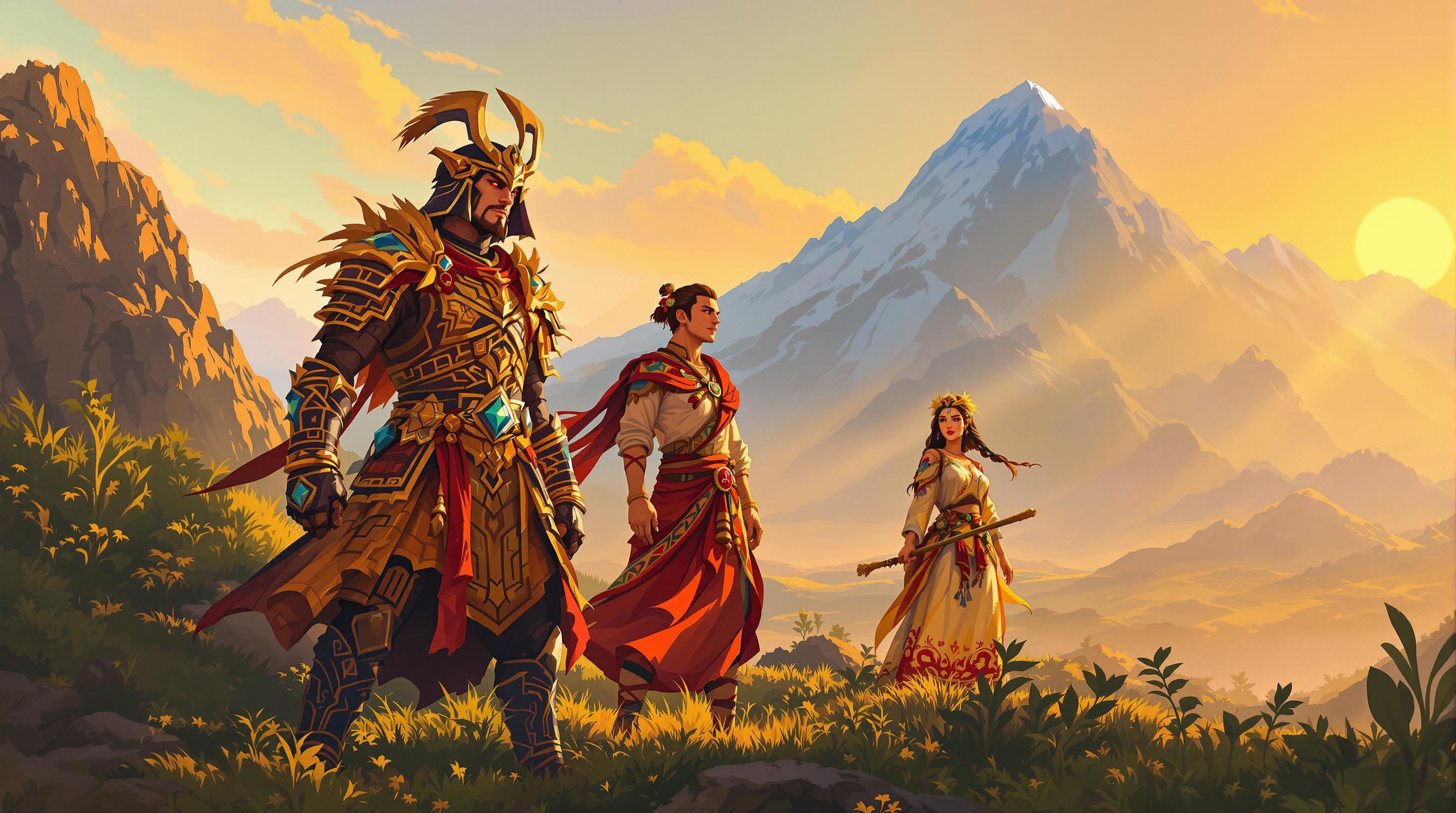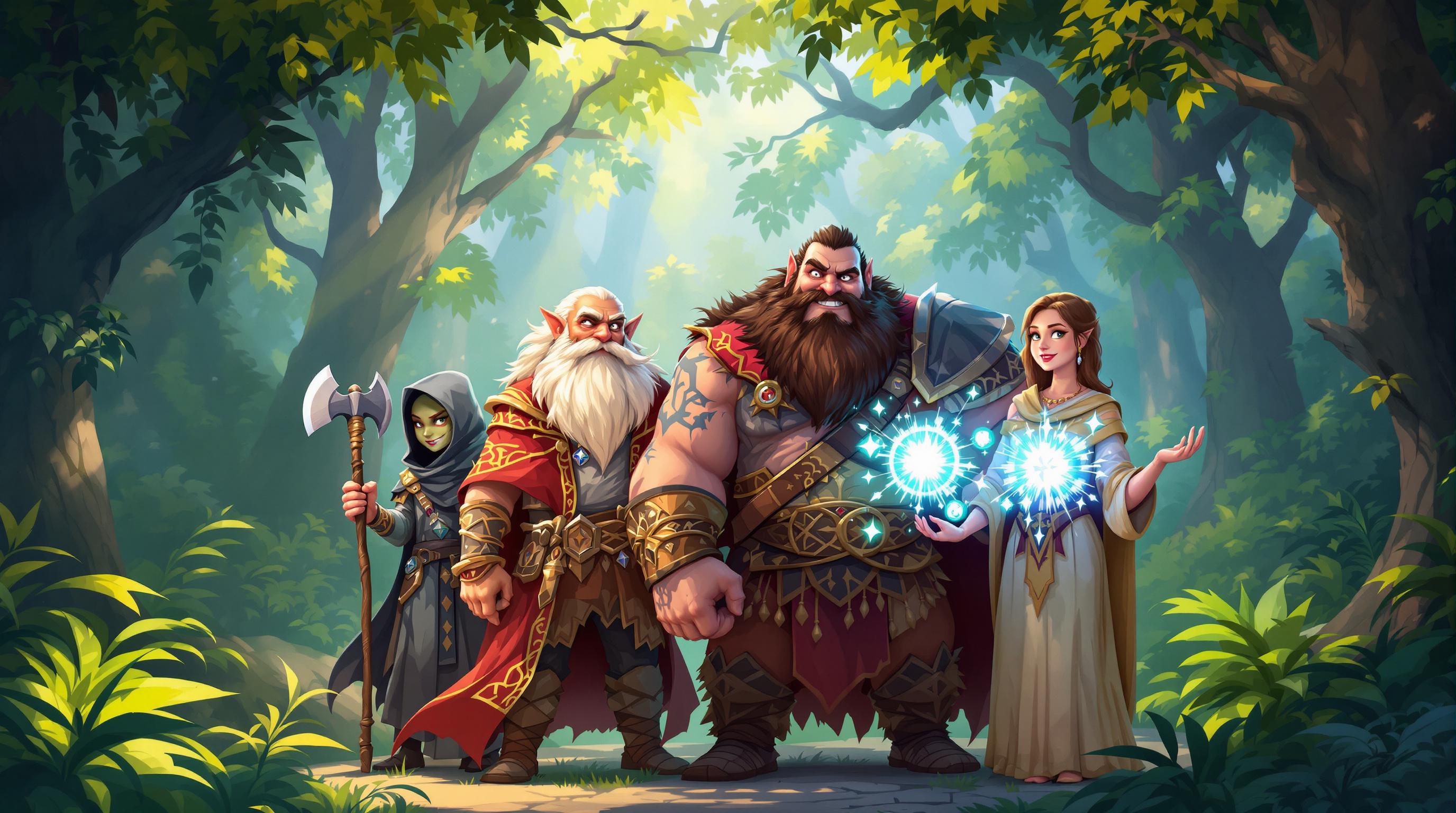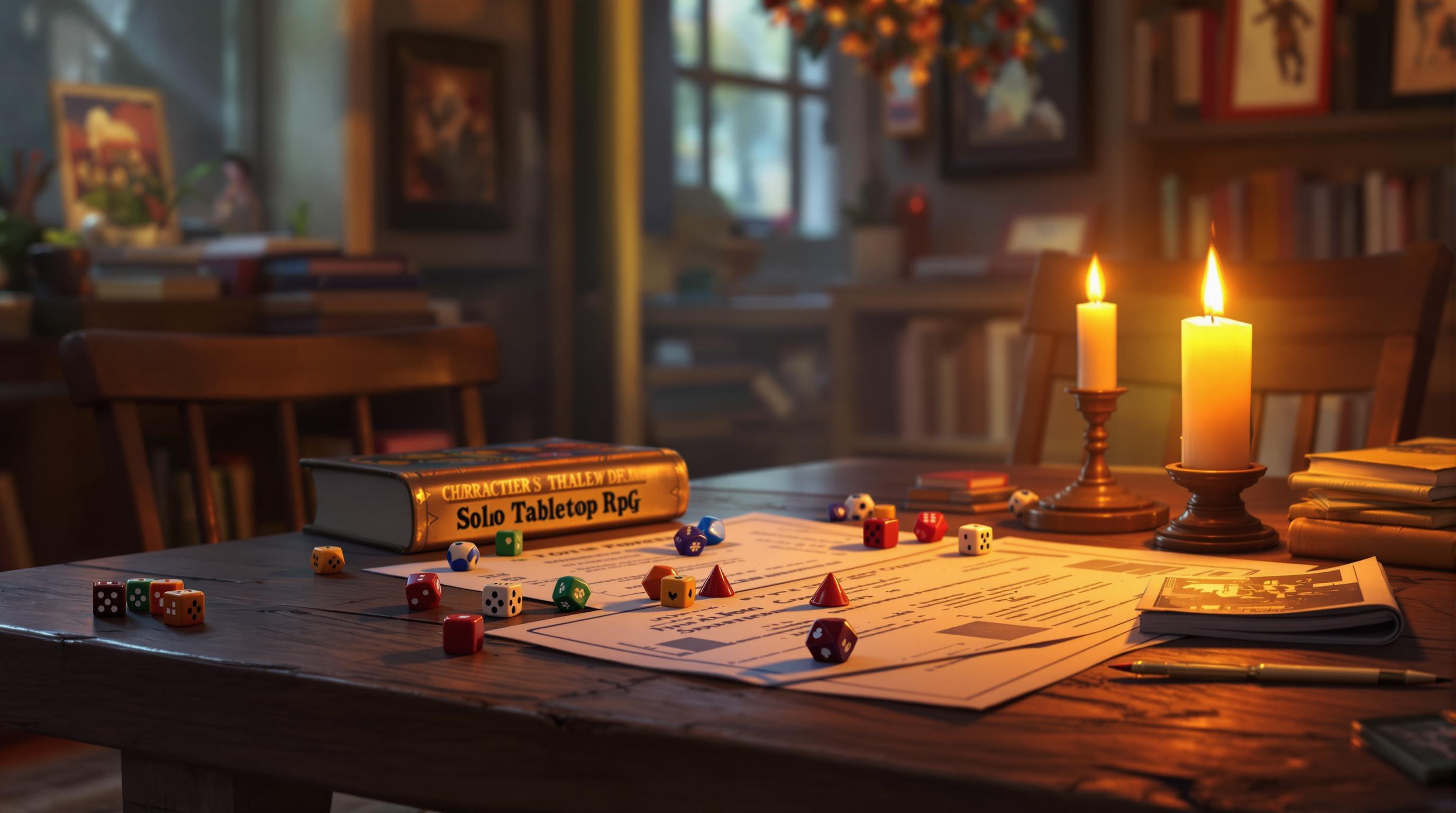Survival RPGs are all about tough choices, harsh realities, and the constant struggle to stay alive. Forget saving the world as a hero - these games focus on fragile characters, scarce resources, and brutal consequences. Every decision matters, whether it’s managing dwindling supplies, avoiding deadly combat, or navigating moral gray areas. If you’re craving intense, high-stakes gameplay, here are 10 standout survival RPGs that deliver gritty realism:
- Shadowdark: Real-time torch mechanics and limited carrying capacity make exploration and combat nerve-wracking.
- Twilight 2000: A post-apocalyptic military setting with scarce resources and unforgiving tactical combat.
- The Witcher TRPG: Brutal combat, lasting injuries, and resource-driven alchemy in a dark medieval world.
- Warhammer Fantasy Roleplay: A grimdark setting where disease, corruption, and social struggles make survival a challenge.
- Mörk Borg: Minimalist mechanics in a dying world where every fight feels like a gamble.
- Symbaroum: A corrupted forest setting with strict rest rules and a risk-reward system tied to magic use.
- Vampire: The Masquerade 5th Edition: Balancing your vampire instincts and humanity while managing hunger and social survival.
- DIE: The Roleplaying Game: Psychological survival in a cursed fantasy world tied to personal traumas.
- Call of Cthulhu: Cosmic horror with sanity mechanics and fragile characters facing the unknown.
- Cyberpunk RED: A dystopian future where scarcity, cyber-psychosis, and moral compromises define survival.
These games emphasize resource management, lethal combat, and morally complex storytelling, making every session feel intense and personal. Whether you prefer post-apocalyptic wastelands, medieval struggles, or dystopian futures, there’s a survival RPG here for you.
Ashland RPG - Survive the Wasteland! | Post-Apocalyptic Tabletop Adventure
What Makes a Survival RPG Gritty and Realistic
At the heart of gritty survival RPGs lies a sense of constant tension, where every decision could tip the scales between life and death. These games thrive on creating a world where survival feels earned, not given.
Resource scarcity is the foundation of this experience. Essentials like food, water, ammunition, and medicine are hard to come by, forcing players to carefully consider every move. As Grim Portent explains:
"In an RPG I'd generally say that grittiness means that food and water matter and are hard to acquire, injuries are hard to heal and can cause substantial penalties, health is generally lower for PC and NPC alike, people are generally pretty close to real world capabilities and rely on equipment to improve their utility and survivability."
– Grim Portent
Imagine standing on the brink - your supplies are dwindling. Do you risk venturing into a crumbling building for a chance at survival, or do you conserve energy and hope for a better opportunity? Decisions like these define the gameplay.
Lethal combat mechanics set gritty RPGs apart from their more heroic counterparts. Here, combat isn't about flashy moves or prolonged battles. It's brutal, swift, and often best avoided altogether. A single misstep - a gunshot, a blade - can end a character's journey in seconds, making every encounter pulse with tension.
Lasting consequences amplify the realism. Injuries linger, like a broken leg that slows movement for weeks or a wound that festers without proper care. Psychological scars from witnessing violence or making tough moral decisions can haunt characters throughout the game, shaping their actions and interactions.
Morally complex storytelling adds another layer of depth. These games don't deal in clear-cut heroes and villains. Instead, players face dilemmas that reflect the messy compromises of real life. Do you share your last bit of medicine with a stranger, knowing it might save their life but endanger your own group? Or do you steal from an abandoned home to feed your loved ones, risking the wrath of whoever might return? These choices challenge players to navigate a world where right and wrong blur into shades of gray.
The atmosphere in gritty RPGs is soaked in impending doom and uncertainty. As Pleh describes:
"Gritty tends to imply that the protagonists/heroes suffer more and their ultimate victory is less certain. Moreover, it tends to communicate an overwhelming theme or mood of impending doom and not even a flashy or climactic doom. Just a bleak, hopeless, despondent doom in an unsympathetic world."
– Pleh
This bleakness is reinforced by realistic physical limitations. Characters aren't superheroes; they tire, bleed, and break. They need tools to fix equipment, proper medical attention to recover from injuries, and time to heal. Survival depends on skill, preparation, and a little luck - not magic or superhuman abilities.
Finally, small-scale, personal stakes replace the epic, world-saving quests typical of other RPGs. The focus shifts to immediate, relatable challenges: finding clean water, keeping a community safe, or surviving a harsh winter. These struggles feel more intimate and urgent, making every small victory - like lighting a fire in a snowstorm or scavenging a can of food - deeply satisfying.
In gritty survival RPGs, the goal isn't to become a legendary hero or save the world. It's to scrape by, one day at a time, in a world that feels indifferent to your existence. And in that struggle, every moment of survival becomes its own reward.
1. Shadowdark
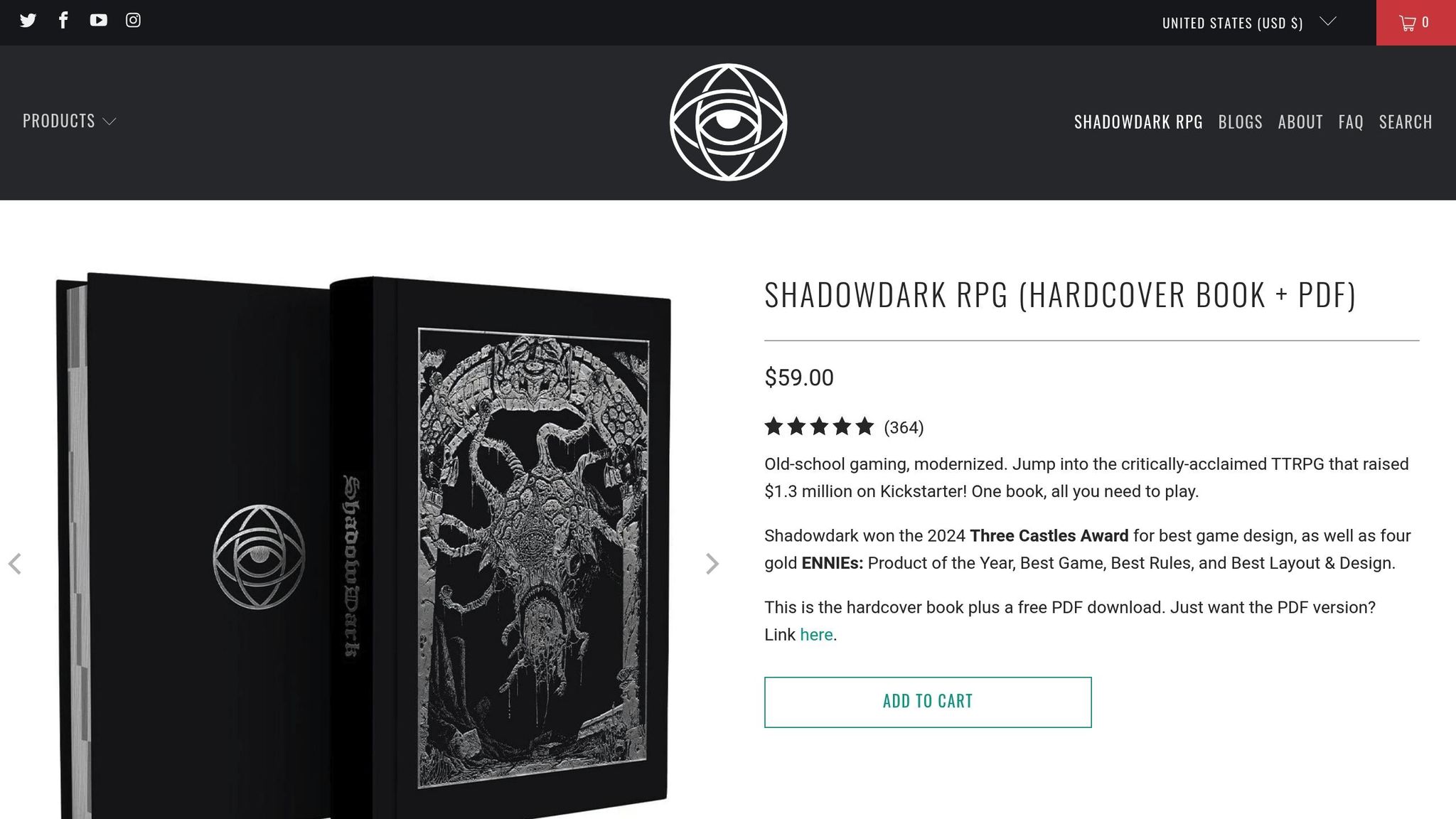
Shadowdark captures the essence of gritty survival, where every choice - whether it’s about resources or combat - feels like it could make or break your journey. This revival game keeps survival front and center, immersing players in a world where darkness is a constant danger and every item matters.
Resource Scarcity and Management
A standout feature of Shadowdark is its real-time torch mechanic: torches burn for exactly one hour of gameplay. This adds a real sense of urgency as you explore. Every second you spend deciding your next move, your light source dwindles. On top of that, the game uses a gear slot system tied to your character’s Strength stat, limiting how much you can carry. Your carrying capacity equals your Strength or 10 - whichever is greater. This makes every packing decision critical. Do you bring an extra weapon, or save room for rope and rations? Cooperation with your party becomes essential, as sharing resources could mean the difference between survival and doom. This scarcity doesn’t just make exploration tense - it makes combat even riskier.
Combat That Keeps You on Edge
In Shadowdark, the absence of light is more than just a visual challenge - it’s a life-threatening disadvantage. Only monsters have darkvision, so when your torch burns out, you’re left blind and vulnerable. Enemies, however, thrive in the shadows. This dynamic makes combat especially nerve-wracking. Characters are fragile, so success often depends on careful planning, strategic positioning, and a bit of luck. Every encounter feels like a fight for survival.
Stories with Tough Choices
Shadowdark doesn’t just challenge you with survival mechanics - it also pushes you morally. The setting, known as The Gloaming, is anything but black-and-white. Materials like Cursed Scroll 1: Diablerie and character classes such as Knight of St. Ydris, Warlock, and Witch force players to weigh power against risk. Adventures like The Hideous Halls of Mugdulblub present ethical dilemmas that leave lasting impacts on the story. It’s a world where heroism isn’t always clear-cut, and every decision feels heavy.
Survival Mechanics That Feel Real
The game’s mechanics mirror real-world survival challenges. With limited carrying capacity and resources that deplete in real time, you have to think like a true adventurer. Do you have enough light sources? Are you prepared for random encounters? Can you balance weapons, healing items, and other essentials? There’s no room for magical shortcuts here. Every expedition demands careful planning, teamwork, and backup strategies. These elements combine to create a survival experience that feels authentic and deeply rewarding, where every victory is hard-earned.
2. Twilight 2000
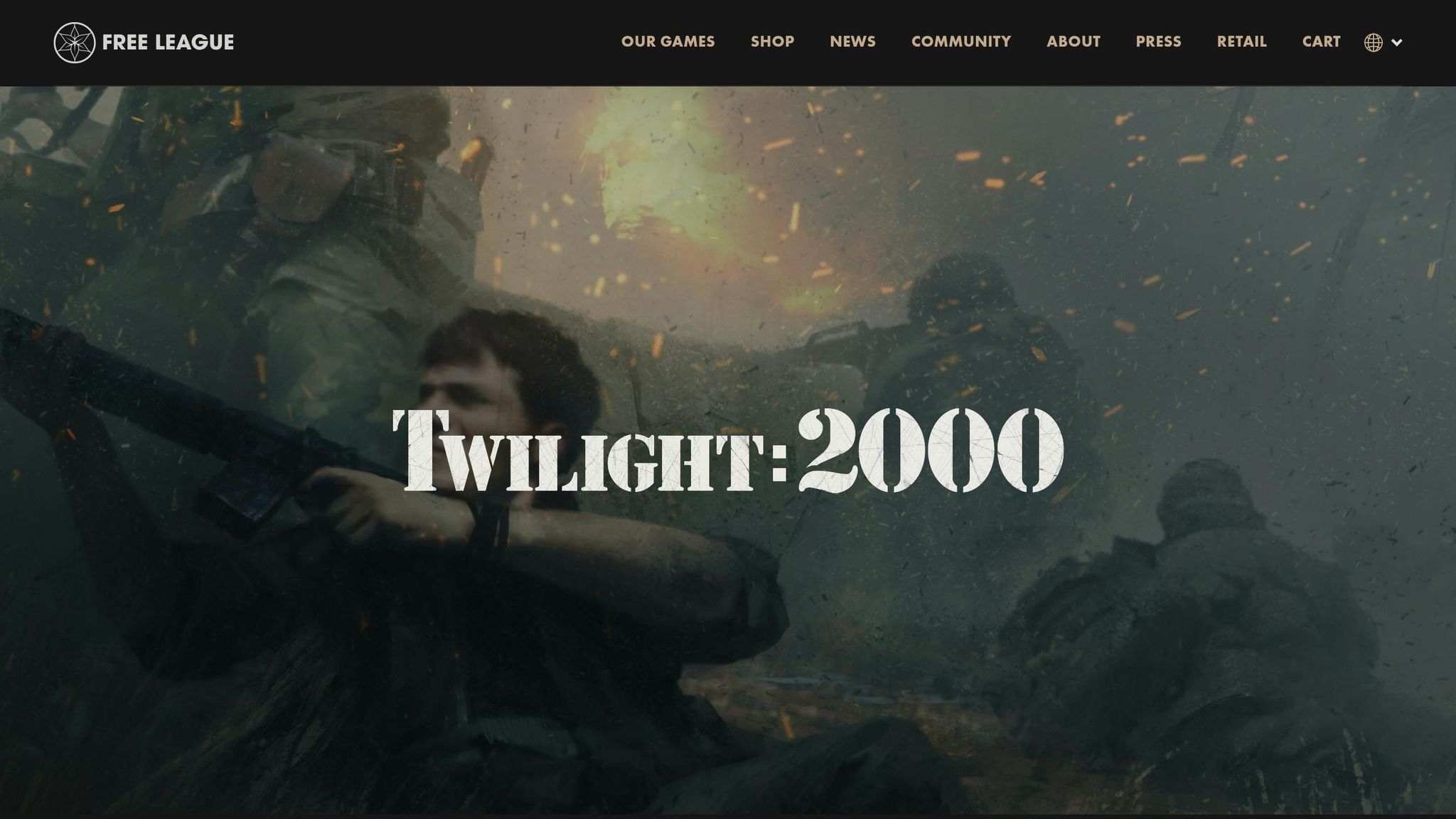
Set in the aftermath of World War III, Twilight 2000 immerses players in a gritty, post-apocalyptic military landscape where survival hinges on every decision - and every bullet. The game thrives on its brutal realism, emphasizing resource scarcity and the harsh realities of life in a world where supply chains have collapsed. This creates a tense atmosphere filled with tactical combat and morally challenging choices.
Resource Scarcity and Management
In Twilight 2000, managing resources is a constant struggle. Players must keep track of essentials like health, ammunition (in various calibers), fuel, food, water, and even the durability of their gear. Encumbrance is tied to a character’s Strength, with a "units" system determining how much they can carry. Supplies are so scarce that, in one 4th edition campaign, players scoured a 34-square-mile area over four hours and found nothing but a credit card. Yes, it’s that unforgiving.
Combat: Lethal and Unforgiving
Combat isn’t just a game mechanic - it’s a brutal test of strategy and survival. The system mirrors real-world military conditions, where units typically break after suffering 25–30% casualties. This applies to both player characters and NPCs, making every firefight a high-stakes gamble. Running out of the right caliber of ammunition mid-battle can turn a bad situation into a fatal one. The unforgiving nature of combat naturally feeds into the game’s deeper narrative, where every encounter leaves lasting scars.
Storytelling With Tough Moral Choices
Survival in Twilight 2000 isn’t just about fighting or scavenging - it’s about making impossible decisions. With resources stretched thin, players constantly face dilemmas: Do you share your last medical supplies to save an ally, or keep them for yourself? Do you trade ammunition for food, knowing you’ll need both to survive? These moments of moral ambiguity add depth to the game, forcing players to grapple with the harsh realities of a world where every choice has consequences.
Survival Mechanics Rooted in Realism
The game’s mechanics are painstakingly designed to reflect real-world survival challenges. Fuel consumption, for instance, is calculated based on actual vehicle specifications. Soviet and Pact armored vehicles consume less fuel than their larger American counterparts, and using alcohol as a substitute fuel doubles consumption. Teamwork is also critical - every group member must contribute during downtime to ensure the party’s survival. For added realism, game masters can create terrain-specific prey tables for hunting or allow players to focus their searches on specific areas.
These mechanics make every small victory - whether it’s finding a meal or securing a safe place to rest - feel hard-earned. The relentless focus on survival ensures that players remain fully engaged, as every decision, no matter how minor, can mean the difference between life and death.
3. The Witcher TRPG
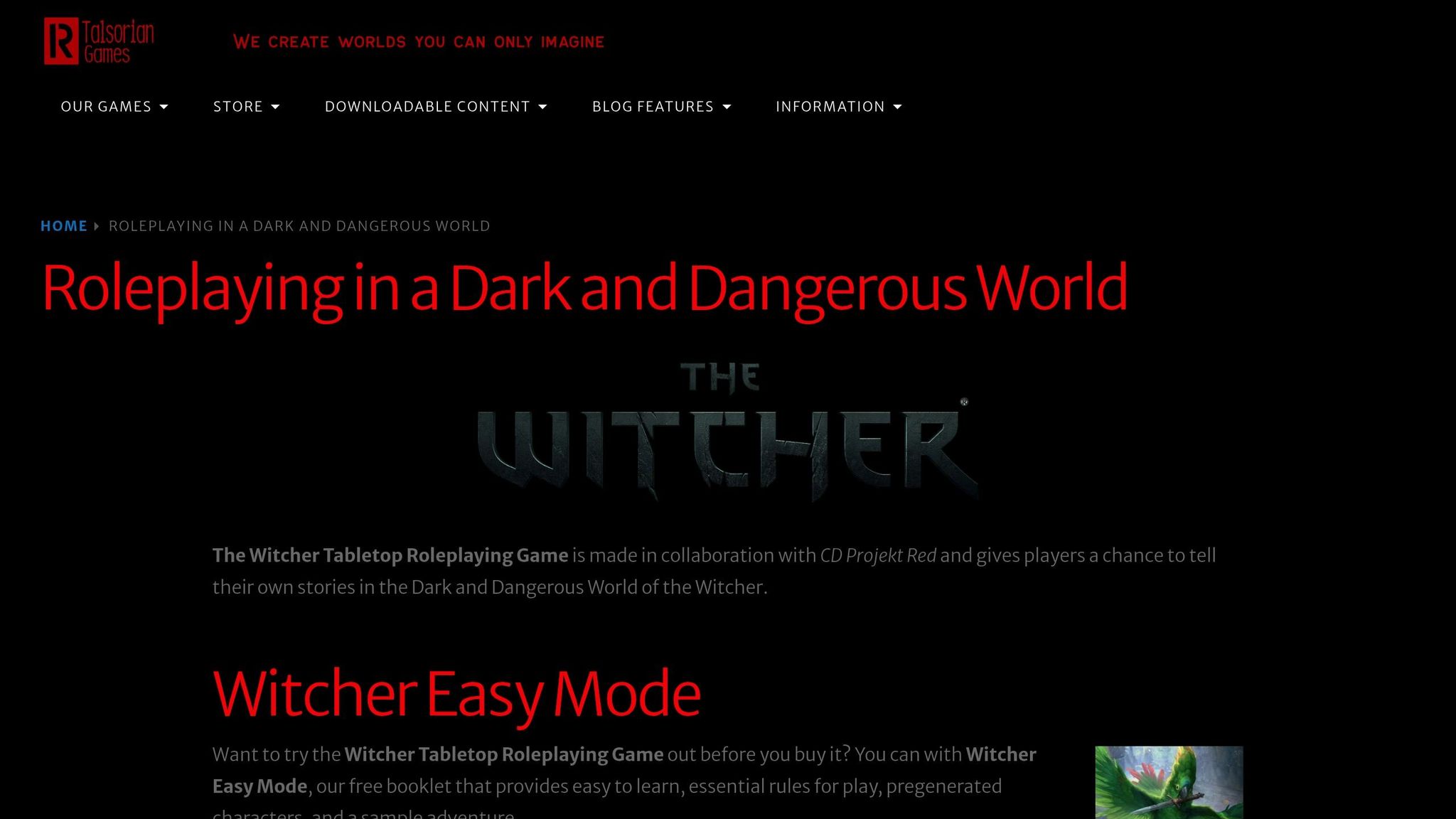
Set in the dark and unforgiving world created by Andrzej Sapkowski, The Witcher TRPG plunges players into a gritty survival experience. Strategy, sacrifice, and tough moral decisions are just as critical as combat skills. This isn’t a game where heroes walk away unscathed - every wound tells a story, and survival hinges on careful planning and hard choices.
Lethal and Relentless Combat
Combat in The Witcher TRPG is as brutal as the world it portrays. Injuries leave lasting marks, and recovery is slow and arduous. A single well-placed blow can end even the most seasoned witcher, creating an ever-present sense of danger. The game’s injury mechanics reflect this realism, with wounds that permanently or temporarily impair characters, forcing players to approach every fight with caution.
Adding to the tension is a "death spiral" system, where each injury progressively weakens characters. This means that every fight carries real consequences - injuries don’t just sideline a character for a while; they can permanently alter how they perform in future encounters. Scars, disabilities, and reduced abilities are all on the table, making every battle a gamble.
When it comes to monsters, brute force rarely works. Most creatures are far too powerful to defeat without preparation. Players must research their foes, craft the right tools, and sometimes avoid combat altogether. This focus on strategy over raw power makes encounters nerve-wracking and rewarding, where knowledge and preparation are your greatest weapons.
The Struggle of Resource Management
Resource management is at the heart of The Witcher TRPG. Players must keep track of essentials like food, water, and alchemical ingredients. Running out of supplies isn’t just inconvenient - it can lead to dire consequences or even death.
Alchemy and crafting play a significant role, requiring rare ingredients and careful planning. Whether it’s brewing a life-saving potion, crafting bombs, or repairing a silver sword, managing resources becomes just as important as surviving combat. Equipment can degrade over time, especially under harsh conditions or after tough battles, adding another layer of realism and urgency.
Unlike many other systems, resource management in The Witcher TRPG is deeply tied to gameplay. Players must constantly balance their immediate needs with long-term survival, ensuring they’re always prepared for the challenges ahead.
Survival Mechanics That Feel Real
The game doesn’t stop at combat and resources - it also simulates real-world survival challenges. Players must deal with hunger, thirst, fatigue, and exposure to the elements. Finding shelter, maintaining equipment, and treating injuries with limited resources are all crucial to staying alive.
Environmental hazards, like severe weather or treacherous terrain, add another layer of difficulty. For instance, a sudden snowstorm might force players to find shelter or risk frostbite. Survival checks could determine whether characters can locate resources or navigate to safety, and failure might result in injuries - or worse. These mechanics make survival feel like a constant struggle, immersing players in the harsh realities of The Witcher’s world.
Complex Choices and Moral Ambiguity
True to its source material, The Witcher TRPG thrives on morally gray storytelling. Players frequently face decisions with no clear right or wrong answers. Should they act for personal gain or consider the greater good? Every choice carries weight, with consequences that ripple through the story and the world.
The game encourages creative problem-solving, allowing players to tackle challenges through negotiation, stealth, or clever resource use instead of relying solely on combat. This approach rewards ingenuity and deep engagement with the game’s mechanics and world. Each moral decision shapes not only the story but also the characters’ survival and long-term prospects, reinforcing the game’s relentless theme of struggle and sacrifice.
4. Warhammer Fantasy Roleplay
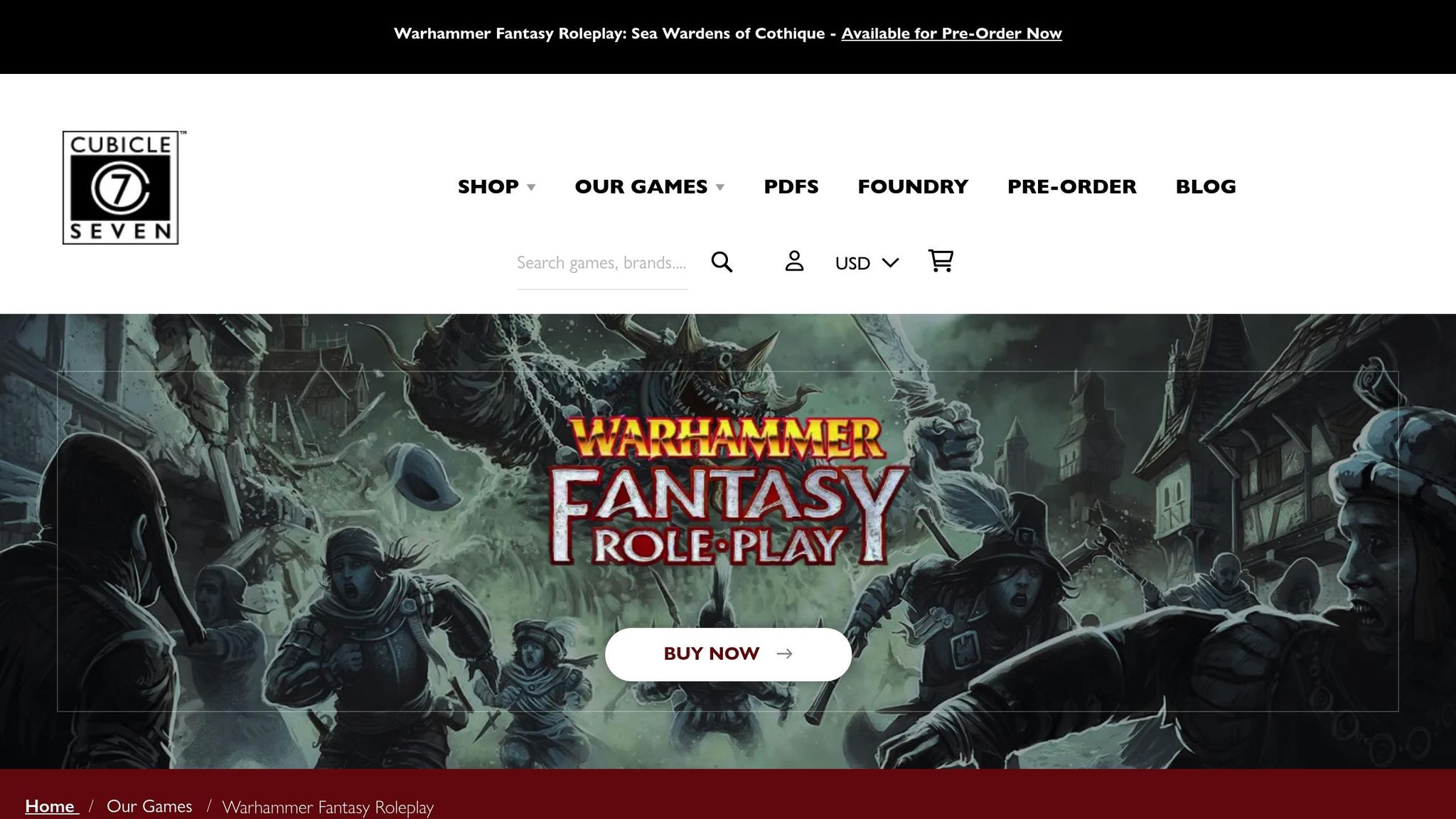
Warhammer Fantasy Roleplay plunges players into the grim and gritty Old World, a place where danger is everywhere, and survival is a daily struggle. This dark fantasy RPG doesn’t sugarcoat its challenges - characters often start as rat catchers or beggars, reflecting the harsh realities of life in a brutal and unforgiving world. Social mobility is rare and hard-earned, making every small victory feel monumental.
Lethal and Unforgiving Combat
Combat in Warhammer Fantasy Roleplay is not for the faint of heart. Every fight feels like a gamble, with life and death hanging by a thread. Characters have limited hit points, so even minor skirmishes can leave lasting scars - or worse. Critical hits and fumbles add to the chaos, often leading to sudden deaths or permanent injuries. Healing is a slow and costly process, with magical remedies being both rare and unreliable. Reckless fighting isn’t just risky - it’s a surefire way to end up maimed or dead.
The Struggle of Resource Management
Survival in this world isn’t just about winning battles; it’s also about managing scarce resources. The game’s economic system is intentionally harsh, forcing players to stretch every coin and ration. Equipment wears out quickly, replacements are pricey, and basic necessities are hard to come by. This scarcity often pushes characters into desperate situations - whether it’s risking dangerous shortcuts or striking uneasy bargains with shady figures. Every choice feels like a gamble, and the stakes are always high.
Stories That Blur the Lines Between Right and Wrong
One of the most gripping aspects of Warhammer Fantasy Roleplay is its morally gray storytelling. The Old World is a place where clear-cut right or wrong choices are rare. Trust is a luxury, and even the most heroic characters may find themselves compromising their values to survive. Campaigns like The Enemy Within are masterful at weaving political intrigue, resource scarcity, and looming threats into a narrative where every decision has weighty consequences. This moral ambiguity doesn’t just add depth - it makes every choice feel personal and impactful.
Survival Beyond Combat
Warhammer Fantasy Roleplay doesn’t stop at lethal combat - it brings the full spectrum of survival challenges into play. Disease, starvation, and psychological trauma are just as dangerous as any blade or spell. Characters face infections, malnutrition, and the mental toll of constant danger. Environmental hazards like brutal weather or tainted water add another layer of difficulty, while the ever-present threat of corruption from dark forces looms over every decision. In this world, survival isn’t just a matter of skill - it’s about making tough calls and enduring the consequences. Every step forward feels like a victory against overwhelming odds.
5. Mörk Borg
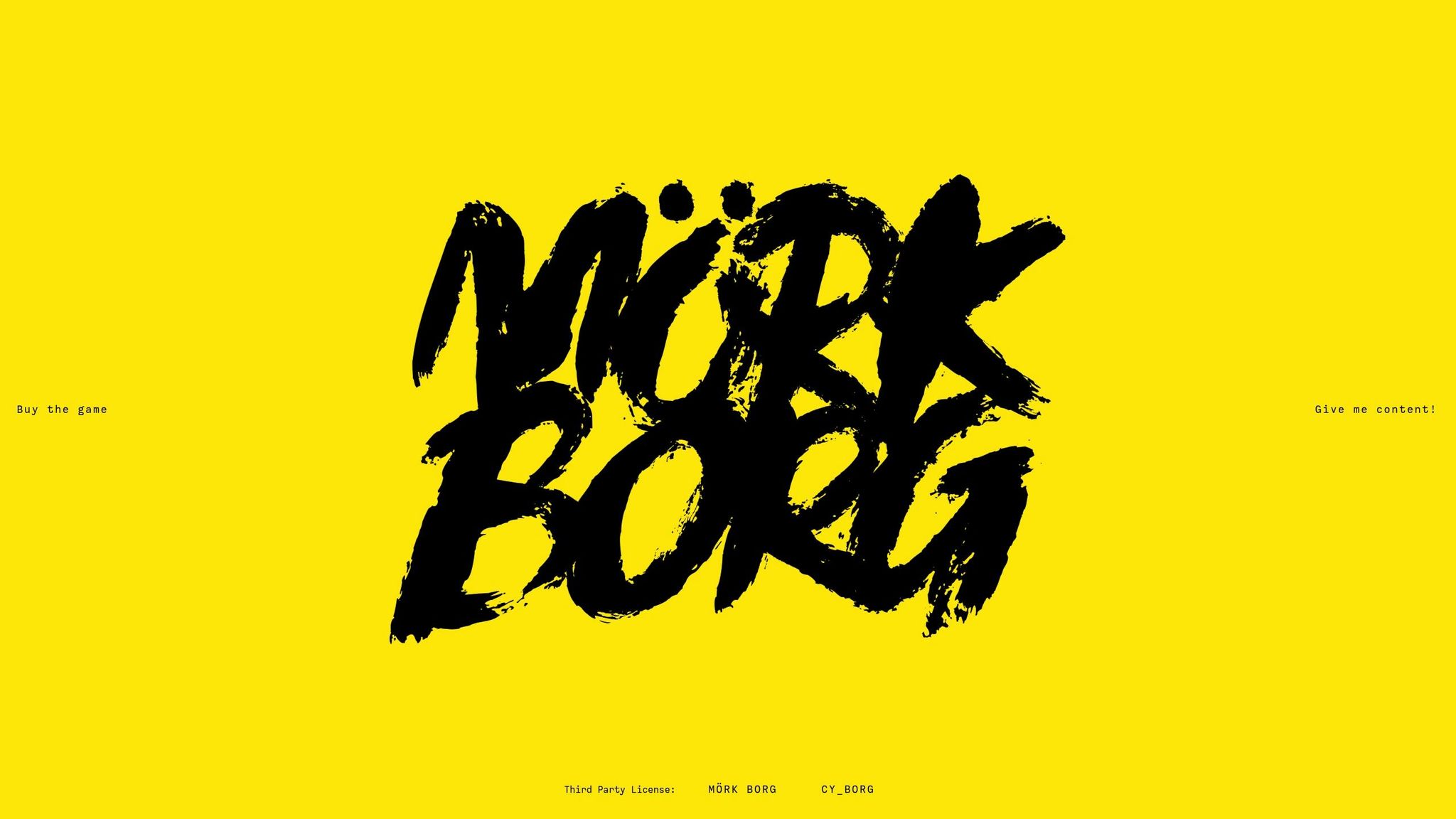
Mörk Borg throws players into a crumbling world on the brink of collapse, where hope is scarce, and death is always lurking. This stripped-down RPG keeps things simple, focusing on the raw struggle to survive in an unforgiving wasteland. Its minimalist approach earned it critical acclaim, including Gold ENNIEs for Best Game and Best Layout & Design in 2020. Here, every decision feels like it could be your last, making survival the ultimate goal.
Brutal Combat with High Stakes
Combat in Mörk Borg is nothing short of ruthless. Characters start with minimal hit points, meaning a single bad roll can end their journey. Armor provides little comfort, and healing is almost nonexistent. Charging into battle without a plan is a quick way to meet an untimely end. Instead, players are forced to think strategically, avoiding unnecessary fights and relying on clever tactics.
This extreme lethality ratchets up the tension in every encounter. Even the smallest skirmish feels like a life-or-death situation, with players constantly weighing their options. Do you risk fighting a wounded creature or try to sneak past unnoticed? In most RPGs, the answer might seem clear, but in Mörk Borg, survival often means retreating instead of playing the hero. Every dice roll feels critical, turning even minor moments into heart-pounding decisions.
The Strain of Resource Management
Managing resources in Mörk Borg is a relentless challenge. Every torch, meal, and arrow must be accounted for, and the inventory system forces players to make tough decisions. Do you carry an extra weapon for safety, or prioritize food and water? When your last torch is burning out, do you push forward into the unknown or retreat to regroup?
Adding to the pressure, random events can destroy or steal supplies in an instant. Weapons break, food spoils, and what once seemed like careful planning can quickly spiral into desperation. This constant scarcity keeps players on edge, making every piece of equipment and every bite of food feel vital.
A Grim and Ambiguous World
Mörk Borg’s setting is one of decay and despair, where morality takes a backseat to survival. Characters are often faced with impossible choices, like whether to share their last bit of food with a stranger or save it for themselves. In a world where death feels inevitable, these decisions carry real emotional weight.
The game’s bleak tone is amplified by its striking visual design, featuring chaotic layouts and bold, high-contrast artwork that reflect the harshness of its world. This isn’t a game about clear heroes and villains. Instead, players navigate a morally gray landscape where even the best intentions can lead to catastrophic outcomes. Every small victory feels hard-earned, and hope is a rare, fleeting reward.
Survival as a Core Mechanic
Mörk Borg doesn’t just tell you about survival - it makes you feel it. Hunger, exhaustion, and disease aren’t just flavor text; they come with real penalties that directly impact your character. Skip meals, and your abilities start to deteriorate. Forgo rest, and you’ll become more vulnerable. These mechanics force players to constantly evaluate their choices, knowing that neglecting basic needs can lead to disaster.
The environment itself is another adversary. Storms can scatter party members, plagues can devastate entire communities, and harsh weather can turn a simple journey into a deadly ordeal. Random event tables ensure that the world’s dangers are unpredictable, keeping players on their toes. With an average rating of 4.8/5 on DriveThruRPG from over 1,000 reviews, it’s clear that Mörk Borg delivers the kind of gritty, survival-focused experience that fans of the genre crave.
Mörk Borg isn’t just about fighting monsters - it’s about enduring a world that’s actively working against you. Its unforgiving mechanics, relentless scarcity, and high stakes make it a standout choice for players who want survival to feel raw and real. Every decision matters, and the constant tension ensures that no moment is ever taken for granted.
sbb-itb-b8b00a5
6. Symbaroum
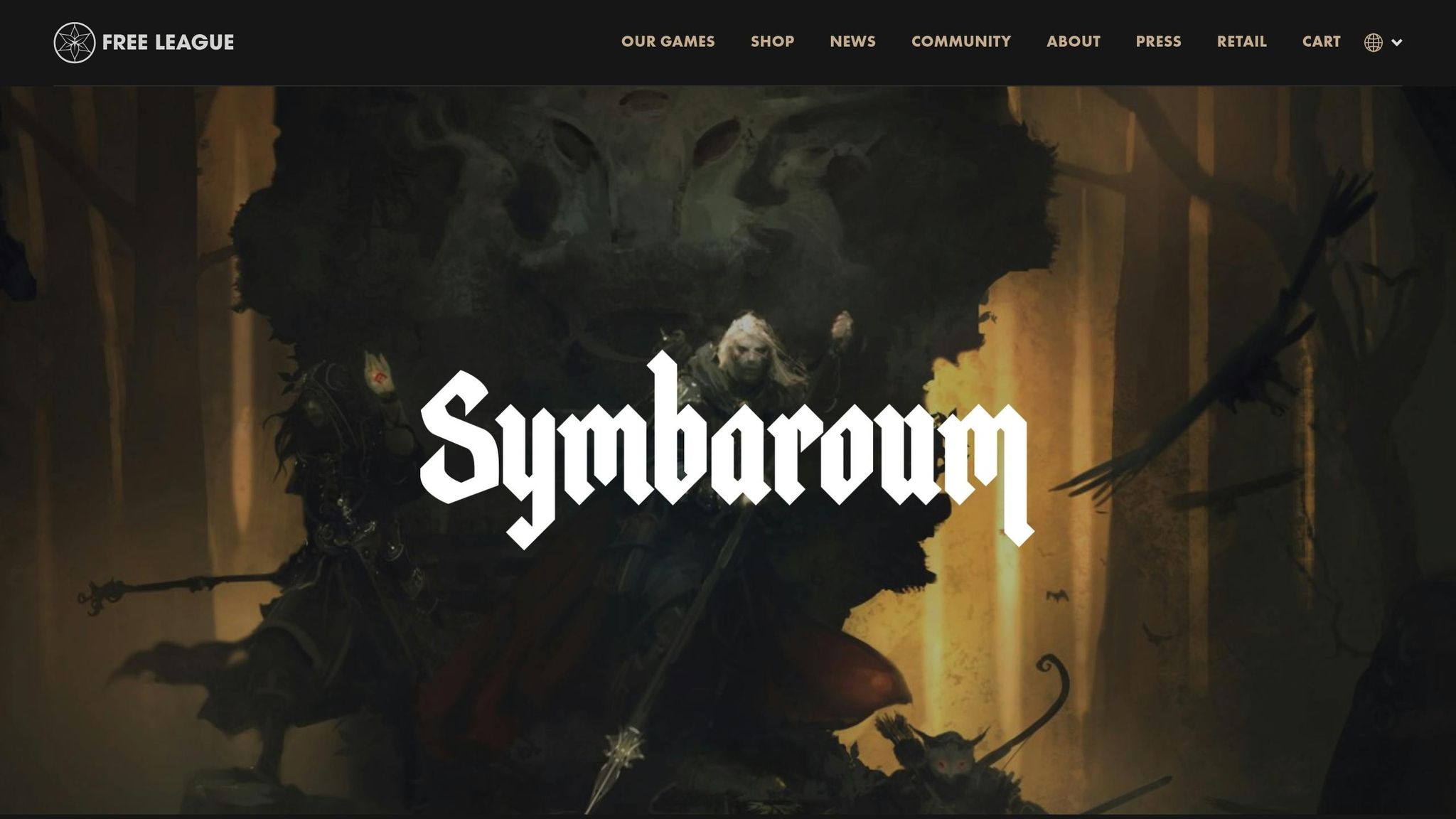
Symbaroum plunges players into a dark and treacherous fantasy world, dominated by the mysterious and dangerous Davokar forest. This Swedish RPG stands apart by making every spell and artifact a double-edged sword, as they increase corruption with use. Survival in this game isn’t just about brute strength; it’s about carefully balancing resources, managing risks, and navigating both brutal combat and morally complex decisions.
Resource Management: A Fight for Survival
In Symbaroum, healing and recovery aren’t handed out freely. The game’s Hit Dice system makes these resources incredibly scarce. Unlike many RPGs where injuries are easily patched up, here you’ll find that recovering Hit Dice is a rare privilege. A full recovery demands 24 uninterrupted hours of rest in a completely safe environment - something that’s almost impossible in the dangers of Davokar. Some classes allow limited recovery perks, but even these come with restrictions, forcing players to think twice before making decisions. Every choice matters when resources are this tight.
Combat That Demands Caution
Combat in Symbaroum is not for the faint-hearted. It’s brutal, and every fight carries significant risks. Hit Dice aren’t just for healing; they’re also tied to managing corruption, adding another layer of tension to every encounter. Spellcasters, for instance, must constantly weigh the benefits of using powerful magic against the creeping threat of corruption. This makes every battle a calculated gamble, where the stakes are both immediate and long-term.
A World of Moral Complexity
Symbaroum isn’t just about survival - it’s about the cost of survival. The Corruption mechanic drives home the idea that power always comes at a price. Delving into forbidden knowledge or wielding powerful magic might grant short-term advantages, but it can also lead to permanent corruption, reshaping your character in ways you might not expect. This constant tension between gain and loss creates a narrative filled with difficult, morally ambiguous choices.
Survival Mechanics That Feel Real
The game’s strict rest rules add another layer of realism to its survival theme. To recover Hit Dice - and by extension, to heal wounds and manage corruption - you’ll need a full 24 hours in a completely safe environment. That’s no small feat in a world as hostile as Davokar. This mechanic mirrors the challenges of real-life recovery, where safety and time are essential. By treating magic as a finite and dangerous resource, Symbaroum forces players to constantly ask themselves: is the immediate payoff worth the long-term consequences?
7. Vampire: The Masquerade 5th Edition

In this edition of Vampire: The Masquerade, survival takes on a deeply personal and psychological twist. Instead of battling external dangers, players face an internal struggle - an ongoing war between their lingering humanity and the monstrous instincts of their vampire nature. This isn't your typical survival RPG. Here, the real danger lies within, and every decision you make chips away at the person you once were.
Resource Scarcity and Management
At the core of V5's survival mechanics is the Hunger system, a chilling replacement for traditional health management. Your vampire character must constantly balance their need for blood with the risk of losing control. Unlike typical RPGs where you manage food or water, this game focuses on an insidious addiction that grows stronger every time you tap into your supernatural abilities.
Every use of your powers increases your Hunger. Starve yourself too long, and you risk entering a frenzy, a state where your character becomes a mindless predator. Feed recklessly, and you risk breaking the Masquerade - the code that keeps vampire society hidden from humans. This creates a tense balancing act where every feeding decision carries weight and consequence.
And then there’s Willpower, a resource just as critical as blood. In a world where manipulation and psychological games are the norm, running out of Willpower leaves you vulnerable to the schemes of elder vampires - or worse, the whispers of your own Beast.
Lethal and Unpredictable Combat
Combat in V5 is anything but straightforward. Reckless violence is strongly discouraged, as every fight carries the risk of lasting consequences. Even the most powerful vampires aren't invincible - one bad decision in battle could leave you with injuries that haunt you long after the fight ends.
The Hunger system adds another layer of danger. Using your supernatural abilities in combat increases your thirst for blood, creating a vicious cycle. You might win the fight, but lose control of your Beast, leading to far worse outcomes than physical wounds. This design encourages players to think beyond brute force, relying instead on negotiation, deception, and careful planning.
The unpredictability of combat means even experienced players can’t rely on familiar tactics. A single bad roll or an untimely frenzy can turn an ordinary encounter into a disaster, potentially exposing the vampire world to human authorities or triggering the wrath of other vampires. This mix of internal struggles and high-stakes combat sets the stage for morally complex gameplay.
Mature, Morally Ambiguous Storytelling
One of V5's standout features is its ability to present players with morally gray choices. Survival often requires compromising your principles. Do you feed on an innocent to keep your strength, or risk starvation and put your allies in danger? These decisions are immediate, raw, and leave a lasting mark on your character's story.
The political intrigue of vampire society adds even more complexity. Ancient elders manipulate younger vampires like pawns, while rival factions pursue agendas that blur the line between protection and oppression. Navigating these treacherous waters forces players to confront difficult truths about loyalty, power, and sacrifice.
The game’s Humanity system heightens the personal horror. Every morally questionable act erodes your character’s connection to their former self. The more you give in to your darker instincts, the further you drift from what made you human. This constant tug-of-war between survival and morality mirrors the harsh dilemmas seen in other survival RPGs but with a uniquely psychological twist.
Survival Through Psychological and Social Pressure
While V5 doesn’t focus on traditional survival elements like shelter or food, it captures the essence of survival through its exploration of psychological and social challenges. Balancing your vampire urges with the need to maintain a human facade mirrors real-life struggles with addiction and isolation.
The Masquerade serves as a survival mechanic in its own right. Maintaining your public persona is crucial. A careless mistake in front of the wrong person can lead to consequences ranging from vampire hunters to internal punishment by your peers. This creates a similar tension to resource management in other survival games, but here it’s tied to social interactions and identity.
Relationships within your coterie - your group of fellow vampires - are just as vital. Trust and cooperation are often the only things standing between survival and destruction. Betraying a coterie member can leave you isolated, and in the dangerous world of vampires, being alone often means death.
Time itself is another layer of the survival experience. Vampires may be immortal, but they’re trapped in an endless cycle of nightly survival. Over centuries, the scarcity isn’t in material resources but in meaning and purpose. This existential weight adds a unique depth to the survival mechanics, forcing players to grapple with both inner turmoil and external threats in every decision they make.
8. DIE: The Roleplaying Game
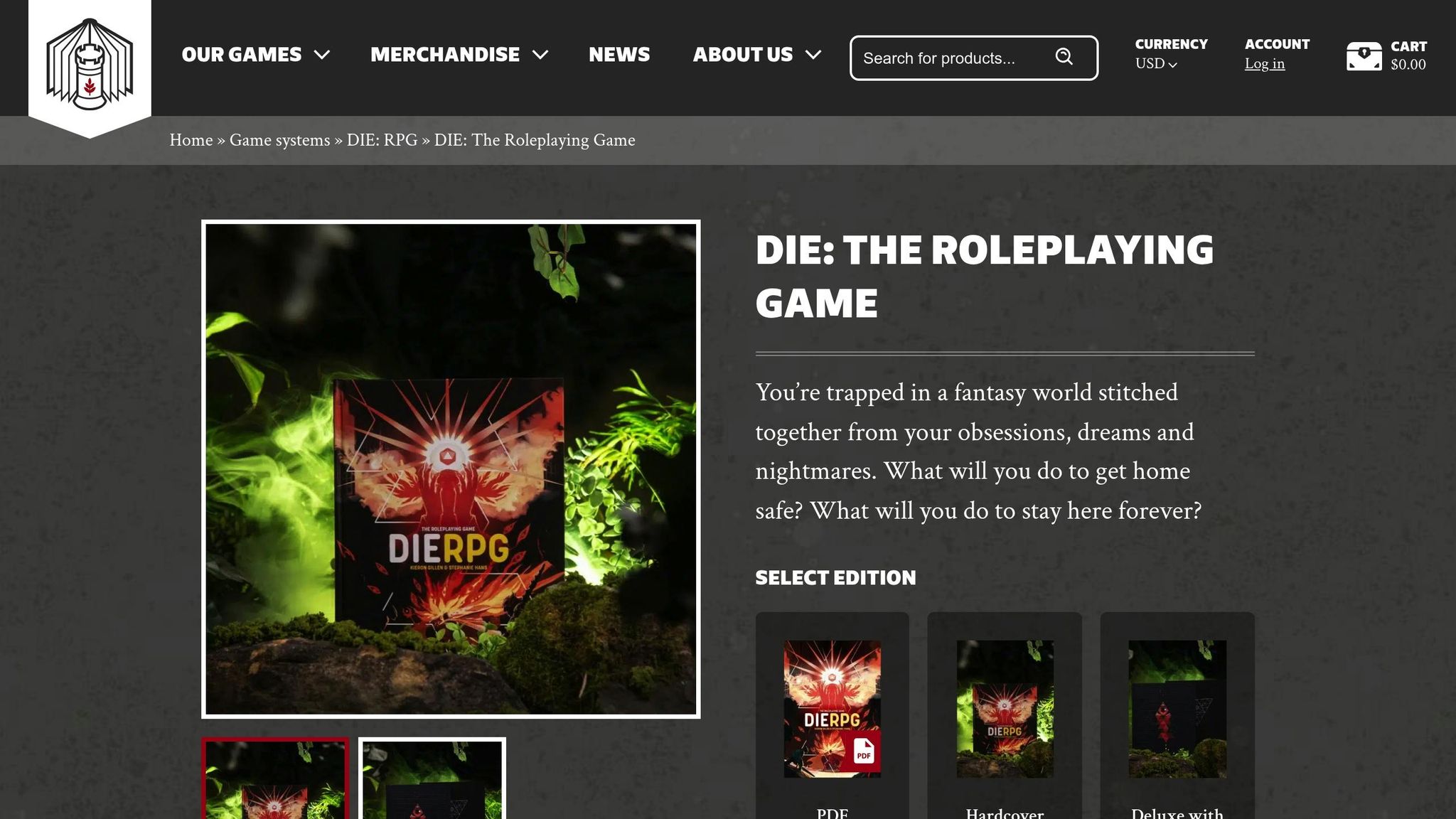
DIE plunges players into a cursed fantasy world where their deepest fears and personal traumas come to life. This award-winning RPG challenges players to survive not just external dangers but also the emotional and psychological battles within. The game’s dark allure lies in how it intertwines personal struggles with the high stakes of a deadly, fantastical realm.
Much like other gritty survival games, DIE thrives on life-or-death tension, blending psychological horror with the constant need to manage resources wisely.
Resource Scarcity and Management
In DIE, survival isn’t just about fighting monsters - it’s about staying alive in a harsh, unforgiving environment. Players must keep track of essentials like food and water while braving extreme weather conditions. Even mundane survival tasks become high-stakes moments, thanks to the game’s use of skill checks, which often turn small challenges into life-threatening situations.
Each character class introduces unique resource dilemmas. For example, the Neo Paragon has to decide how much "Fair Gold" to spend on cybernetic upgrades, while the Godbinder Paragon must weigh the costs of calling on divine powers, which come with mounting debts. These mechanics force players to constantly balance short-term gains against long-term consequences.
Lethal and Unforgiving Combat
Combat in DIE isn’t just dangerous - it’s downright brutal. Every encounter emphasizes realism, where even a single blow can prove fatal. Instead of relying on traditional hit points, the game focuses on psychological elements like fear and hesitation, making every fight a nerve-wracking challenge. A simple knife, wielded with precision and intent, can be just as deadly as any grand weapon.
This unforgiving combat system pushes players to think beyond brute force. Negotiation, clever tactics, and creative problem-solving often provide safer alternatives to direct confrontation. But when violence becomes unavoidable, the stakes are always life and death.
Mature, Morally Ambiguous Storytelling
At its heart, DIE is a game about flawed individuals thrown into a twisted roleplaying scenario. It forces players to face their real-world traumas, which manifest as literal monsters within the game. These deeply personal stories create intense character drama and often lead to friction between players, adding another layer of tension to the already perilous setting.
The game also explores the seductive nature of escapism. Players must decide whether to remain in the fantasy world, which offers a dangerous but tempting refuge, or return to the harsh realities of their actual lives. This moral complexity adds weight to every decision, making the game as introspective as it is thrilling.
"DIE is a game that continues to surprise. It provides the framework for an introspective and provocative gaming experience like nothing else I've ever seen." - Charles Smalls
"DIE is an incredibly fun system to play in and to run... It's pretty low-crunch and has a strong narrative bias towards one kind of game: you're trapped in a fantasy world, with friends you've fallen out of touch with, and it's going to force you to confront the realities of your life." - matthewmaufe
One reviewer shared a particularly memorable moment when a boss fight ended not with violence but by reporting the villain’s actions as a violation of safe space rules. This example highlights how DIE encourages creative, non-traditional solutions to conflicts, reinforcing its focus on survival and moral depth.
9. Call of Cthulhu
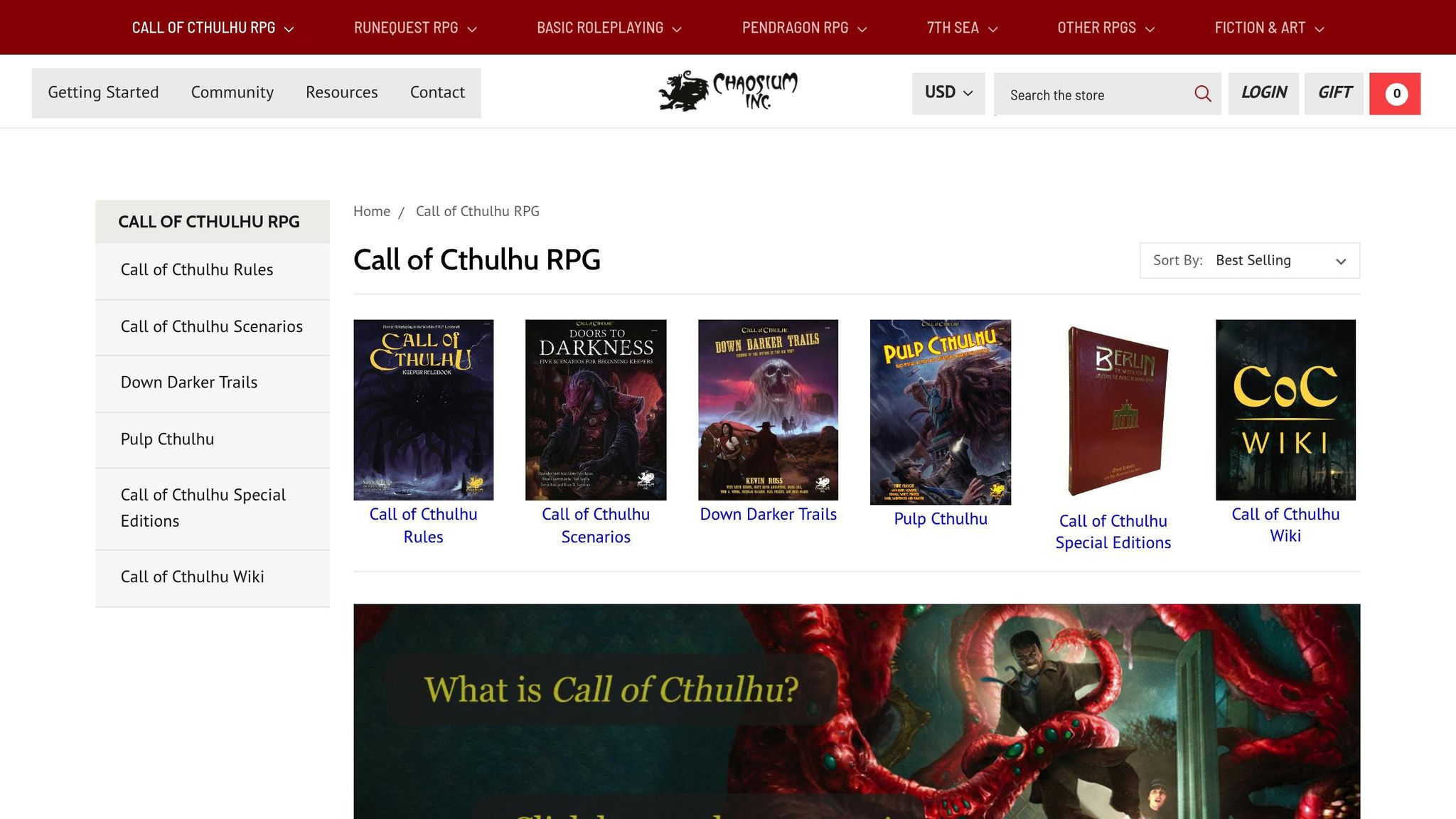
Call of Cthulhu is a legendary horror RPG that immerses players in the eerie world of Lovecraft's Mythos. Instead of playing as invincible heroes, participants take on the roles of everyday individuals who face unimaginable cosmic horrors. The game is built on Chaosium's Basic Role-Playing system, but it introduces unique mechanics tailored to the horror genre, such as sanity and luck. These elements ensure that the ever-present dread of the unknown is woven into every part of the experience.
Resource Scarcity and Management
One of the defining features of Call of Cthulhu is its focus on resource scarcity. Players must carefully balance limited supplies like money, equipment, and social connections, constantly reminded of their characters' fragility. Sanity, perhaps the most critical resource, must also be preserved, as it deteriorates with each brush with the horrifying unknown. Every decision - whether to spend resources or hold back - feels weighty, amplifying the tension and heightening the stakes in every scenario.
Lethal Combat and Cautious Play
Unlike many RPGs, Call of Cthulhu steers players away from combat as a primary solution. Direct confrontations are highly dangerous, whether against human adversaries or otherworldly monstrosities. The game encourages players to opt for careful investigation and strategic avoidance rather than brute force, emphasizing the vulnerability of their characters. Survival often hinges on knowing when to engage - and more importantly, when to retreat.
The Heart of Investigation
At its core, Call of Cthulhu is about solving mysteries. Players must sift through cryptic clues, uncover hidden truths, and piece together fragmented information to confront the looming threats. The investigative elements are not just a gameplay mechanic but a vital part of the game's atmosphere, drawing players into the tension and dread of unraveling secrets that could shatter both mind and body. This relentless focus on discovery over combat reinforces the game's haunting tone and the sense of insignificance in the face of cosmic forces.
10. Cyberpunk RED
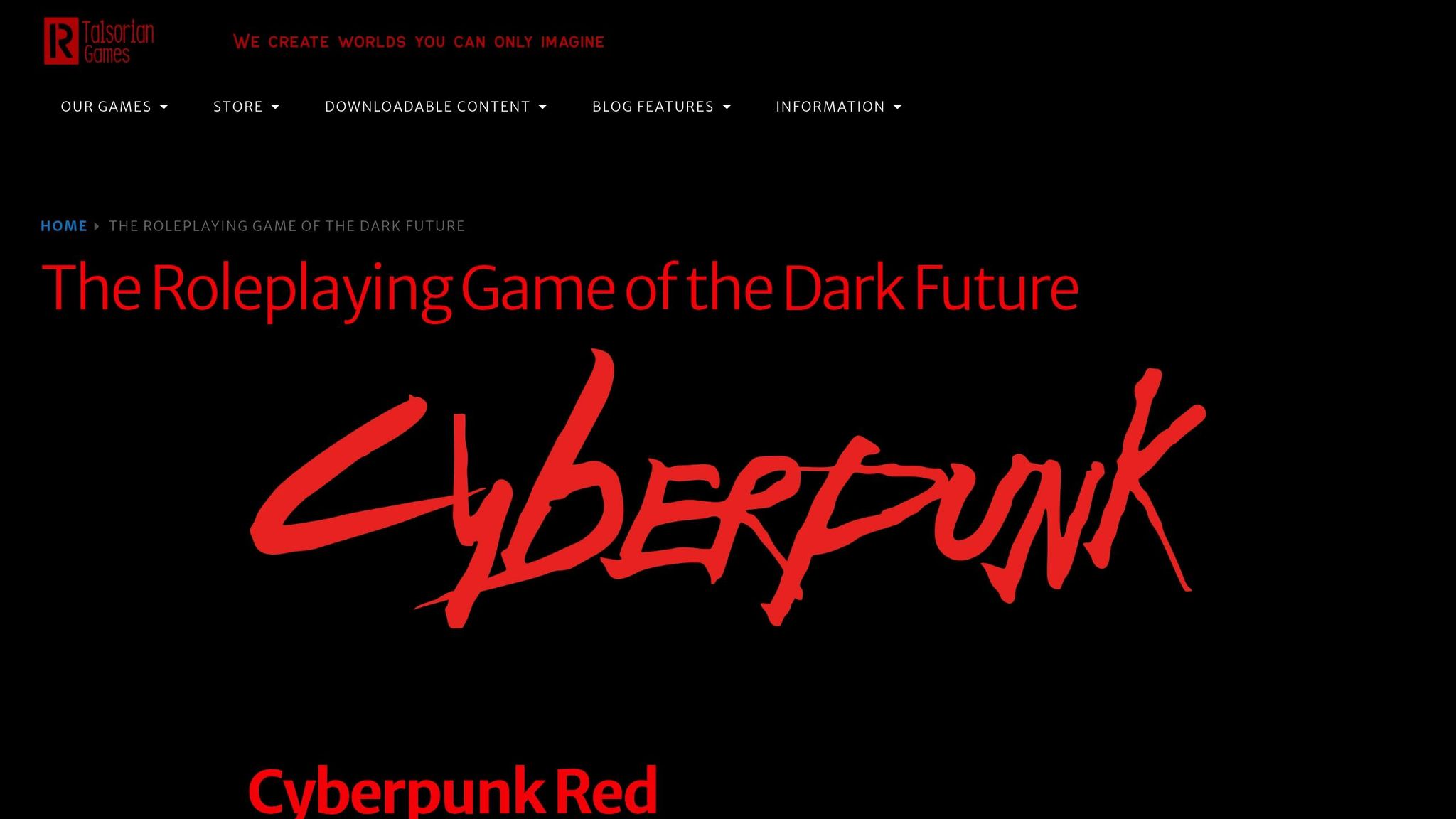
Cyberpunk RED throws you into a gritty, corporatized dystopia where survival is a daily struggle, and every choice chips away at your humanity. Set after the Fourth Corporate War, this RPG from R. Talsorian Games immerses players in a harsh world where bullets, cash, and moral compromises define existence. The game’s mechanics reflect the brutal realities of a future where the line between human and machine is razor-thin, and success often hinges on alliances and sacrifices.
Resource Scarcity and Survival
In the world of Cyberpunk RED, scarcity is the name of the game. Transportation isn’t a given - most characters don’t even own vehicles. This forces players to carefully plan their routes through Night City’s treacherous streets. The Cost of Living rules add another layer of realism, requiring players to manage daily expenses instead of focusing solely on gear upgrades. Every financial decision carries weight.
The fractured post-war world amplifies these challenges. Many regions are isolated, turning supplies into precious commodities. Players must think beyond immediate threats, balancing combat risks with the long-term sustainability of their operations. Even inventory management becomes a tactical concern, as the game’s mechanics ensure carrying capacity isn’t just an afterthought. This constant tension makes every encounter and resource decision feel like a matter of life and death.
Combat: Brutal and Unforgiving
The combat in Cyberpunk RED strikes a balance between danger and playability, standing out from its predecessor. Characters have hit points calculated as 10 plus the average of their Body and Will stats, multiplied by five. For example, a character with average stats (6 in each) starts with 40 hit points - a significant boost compared to the 12 hit points typical in Cyberpunk 2020.
Even with this increased durability, combat remains deadly. A 9mm pistol still deals 2d6 damage in both editions, and headshots double that damage, averaging 14 points per shot. Armor offers less protection than in Cyberpunk 2020, providing about two-thirds of its previous stopping power. The system’s armor ablation, critical injuries, and death saves mechanics ensure that every fight is tense, even with higher hit point totals.
Complex and Morally Ambiguous Storytelling
Beyond the mechanics, Cyberpunk RED thrives on its morally gray storytelling. The game places players in situations where there are no easy answers, no clear heroes or villains. Working for megacorporations you despise might be your only means of survival. The collapse of traditional authority after the Fourth Corporate War leaves players navigating a world where power rules and information is the ultimate weapon. The narrative constantly challenges characters to weigh their ethics against the brutal realities of a society where idealism is often fatal.
Mechanics That Reflect Survival in a Broken World
Cyberpunk RED doesn’t just focus on physical survival - it dives into the psychological and social toll of living in a dystopian future. The Humanity system tracks how cybernetic enhancements and violent actions erode a character’s emotional core, forcing players to consider the personal costs of technological upgrades. Meanwhile, the Reputation and Network systems highlight the importance of relationships in a world where institutions have crumbled. In this setting, who you know can be just as important as what you can do, making social connections a lifeline in the chaos.
Game Comparison Table
Here's a breakdown of the survival mechanics and themes in some of the most notable RPGs, designed to help you pick the one that best suits your group's preferences.
| Game | Setting | Primary Survival Mechanics | Realism Level | Complexity | Mature Content Advisory |
|---|---|---|---|---|---|
| Shadowdark | Dark fantasy dungeons | Real-time torch mechanics | High | Medium | Violence, horror themes |
| Twilight 2000 | Post-nuclear war | Radiation, supply scarcity, equipment degradation | Very High | High | War violence, strong language |
| The Witcher TRPG | Medieval fantasy | Toxicity, injury system, monster encounters | High | High | Blood, sexual themes, alcohol use |
| Warhammer Fantasy Roleplay | Grimdark fantasy | Disease, corruption, social class struggles | Very High | High | Extreme violence, disturbing imagery |
| Mörk Borg | Apocalyptic fantasy | Simple, fast-paced mechanics | High | Low | Horror themes, dark imagery |
| Symbaroum | Corrupted forest realm | Corruption tracking, in-game hazards | High | Medium | Dark themes, body horror |
| Vampire: The Masquerade 5th Edition | Modern gothic-punk | Hunger, humanity loss, blood bond mechanics | High | Medium | Blood, violence, mature themes |
| DIE: The Roleplaying Game | Trapped in RPG world | Emotional trauma, reality breakdown | Medium | Medium | Psychological horror, self-harm themes |
| Call of Cthulhu | 1920s cosmic horror | Sanity loss, fragile mortality | Very High | Medium | Psychological horror, violence |
| Cyberpunk RED | Dystopian future | Humanity loss, resource scarcity, cyber-psychosis | High | High | Violence, drug use, sexual content |
Realism and Complexity
Realism reflects how closely each game mirrors survival challenges. For example, Call of Cthulhu earns a "Very High" rating for its intense focus on human fragility and sanity. Similarly, Warhammer Fantasy Roleplay captures the harshness of a grimdark world, emphasizing corruption and class struggles.
Complexity, on the other hand, measures the system's mechanical depth. Mörk Borg keeps things straightforward for high-energy play, while Twilight 2000 and Cyberpunk RED demand strategic thinking and careful resource management. Shadowdark strikes a balance, offering urgency without overwhelming players.
Mature Themes and Audience Fit
Each game has its own thematic challenges. Vampire: The Masquerade immerses players in a gothic-punk world where they grapple with moral decay and the loss of humanity. Meanwhile, Cyberpunk RED paints a brutal dystopia where every decision is shaped by scarcity and survival.
For newcomers to survival RPGs, Shadowdark and Call of Cthulhu provide accessible entry points with moderate complexity. For seasoned players craving a grittier experience, Warhammer Fantasy Roleplay and Twilight 2000 deliver unrelenting realism, though they come with steeper learning curves.
This guide highlights the unique strengths of each RPG, making it easier to find the perfect fit for your group's playstyle.
Conclusion
This guide has explored how survival RPG systems turn every decision into a pivotal moment, immersing players in worlds ranging from shadowy dungeons to post-apocalyptic wastelands. Each game offers its own unique take on tension and realism.
When choosing a system, align the mechanics with the kind of experience your group is looking for. As Unoriginal aptly put it, "Mechanics matter, because mechanics should reinforce the game's feels and themes". These mechanics also shape how players interact and collaborate during gameplay.
Group experience levels play a big role. Newer players might lean toward Shadowdark or Call of Cthulhu, which balance accessibility with depth. On the other hand, seasoned groups seeking a gritty, unforgiving experience might find Warhammer Fantasy Roleplay or Twilight 2000 more appealing. The level of simulation varies, too - Mörk Borg is quick and ruthless, while The Witcher TRPG and Cyberpunk RED reward players who enjoy detailed, strategic gameplay.
Mature content is another factor to weigh. Some systems, like DIE, delve into psychological horror and emotional intensity, while others, such as Warhammer Fantasy Roleplay, focus on physical brutality and societal decay. Choose a game that aligns with your group’s comfort level regarding these themes.
For a closer look at mechanics, themes, and standout features, check out detailed system guides on TTRPG Games Directory. Whether your group is drawn to medieval corruption or cyberpunk dystopias, there’s a survival RPG out there that delivers the gritty experience you’re after.
FAQs
What should I look for when picking a gritty survival RPG for my group?
When choosing a gritty survival RPG, it’s all about how well the game captures realism and survival mechanics. Pay attention to features like managing resources, dealing with environmental dangers, and handling systems that simulate injuries or long-term effects. These elements make the gameplay more intense and engaging.
Also, think about the tone and storytelling style your group prefers. Does the game focus on harsh, high-stakes survival, or does it blend in more adventurous or fantastical elements? Pick something that fits your group's vibe and supports immersive storytelling, especially if you want to emphasize the challenges of survival.
Finally, consider the game's complexity. Some survival RPGs are packed with detailed rules, while others are easier to pick up and play. Choose a game that matches your group’s experience and play style to ensure everyone has a great time.
What makes survival RPGs different from traditional role-playing games in terms of gameplay and storytelling?
Survival RPGs carve out their own niche in the gaming world by delivering intense, high-stakes experiences that challenge players to think on their feet and persevere. These games often revolve around mechanics like managing scarce resources, navigating environmental hazards, and making critical decisions that can mean the difference between life and death. The result? A gameplay experience that feels urgent and grounded.
Unlike traditional RPGs, which often focus on character progression, rich storytelling, and tactical combat, survival RPGs drop players into harsh, unforgiving environments where staying alive becomes the primary objective. The narratives in these games frequently explore themes of endurance and hardship, creating a more visceral and realistic journey for players.
How can I effectively manage limited resources in survival RPGs like 'Twilight 2000' or 'Mörk Borg'?
Managing limited resources in survival RPGs takes thoughtful planning and a touch of ingenuity to maintain the tension and realism that players expect. It’s crucial to keep a close eye on resources - whether it’s food, ammunition, or essential supplies. This constant monitoring ensures players feel the pressure of survival. Using tools like checklists or tokens can make tracking these items more straightforward and manageable during gameplay.
Adding random events or unexpected mechanics - like sudden weather shifts or equipment breakdowns - can introduce unpredictability, forcing players to adapt and make quick decisions. These surprises not only keep the gameplay dynamic but also encourage players to think strategically. On top of that, weaving resource scarcity into the storyline can make every choice feel weighty, as players must carefully balance risks and rewards. This approach deepens the overall experience, immersing players in the gritty reality of survival.
